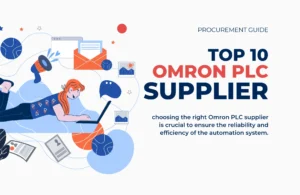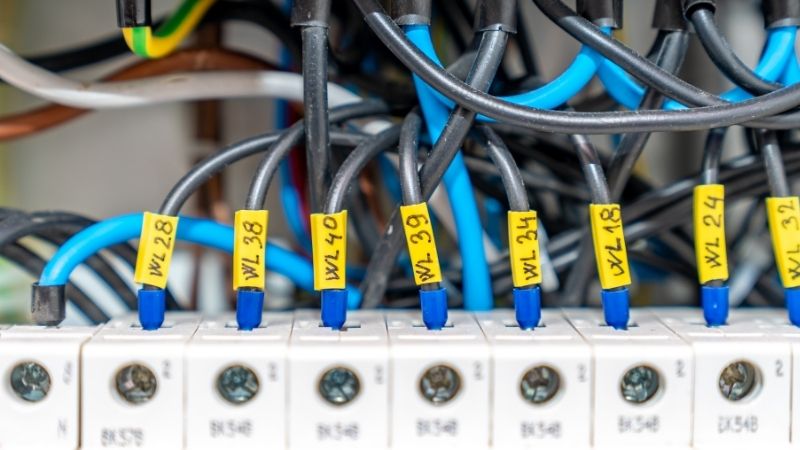Tipos de salidas de PLC: guía esencial para ingenieros de automatización
Ya sea que sea un profesional de automatización experimentado o recién esté comenzando su recorrido, este artículo le brindará información valiosa sobre SOCIEDAD ANÓNIMA Tecnologías de salida.
Tabla de contenido
¿Cuáles son los principales tipos de salidas de PLC y cómo funcionan?
Las salidas de los PLC se presentan en distintas variedades, cada una diseñada para aplicaciones y requisitos específicos. Los tres tipos principales son:
- Salidas de relé:Dispositivos de conmutación electromecánicos tradicionales
- Salidas de transistores: Conmutación de estado sólido para aplicaciones de CC
- Salidas Triac: Conmutación de estado sólido para aplicaciones de CA
Las salidas de relé son las más versátiles, ya que pueden manejar cargas de CA y CC. Un módulo de salida de relé típico contiene bobinas físicas y contactos de relé, que se operan aplicando voltaje a la bobina del relé. Por ejemplo, Allen Bradley 1756-OW16I tiene 16 salidas de relé individuales, lo que lo hace adecuado para diversas aplicaciones industriales.
¿Cuáles son las diferencias clave entre las salidas de estado sólido y de relé?
La elección entre salidas de estado sólido y de relé depende de varios factores:
| Característica | Salidas de estado sólido | Salidas de relé |
|---|---|---|
| Velocidad de conmutación | Rápido (microsegundos) | Lento (milisegundos) |
| Esperanza de vida | Largo (sin partes móviles) | Limitado (desgaste mecánico) |
| Rango de voltaje | Limitado a CA o CC | Tanto CA como CC |
| Costo | Costo inicial más alto | Costo inicial más bajo |
| Mantenimiento | Mínimo | Se requiere mantenimiento regular |
Una ventaja de las salidas de relé es su independencia de voltaje, lo que les permite conmutar cargas de CA y CC sin necesidad de módulos separados. Sin embargo, los dispositivos de estado sólido ofrecen mayor confiabilidad y una vida útil más prolongada debido a la ausencia de partes móviles.
¿Cómo interactúan los módulos de salida digital con los equipos industriales?
Los módulos de salida digital sirven como interfaz entre el programa del PLC y los dispositivos externos. Estos módulos pueden controlar:
- Arrancadores de motor
- Válvulas solenoides
- Luces indicadoras
- Contactores
- Otros dispositivos digitales o discretos
El módulo de salida funciona en función de las decisiones tomadas por el programa del PLC y convierte estas decisiones en acciones físicas a través de señales de voltaje o corriente. Por ejemplo, puede utilizar una salida para operar una carga de CA y otra salida para controlar una carga de CC, lo que proporciona opciones de control flexibles.
¿Cuáles son las consideraciones importantes para la selección de la salida del PLC?
Al seleccionar las salidas del PLC, tenga en cuenta estos factores cruciales:
- Valores nominales de voltaje y corriente
- Requisitos de voltaje de funcionamiento
- Consumo máximo de corriente
- Necesidades de protección contra sobretensiones
- Requisitos de conmutación
- Frecuencia de conmutación
- Tipo de carga (resistiva, inductiva, capacitiva)
- Requisitos de tiempo de respuesta
- Condiciones ambientales
- Temperatura de funcionamiento
- Niveles de humedad
- Ruido eléctrico
¿Cuáles son los problemas comunes de solución de problemas con las salidas del PLC?
Comprender los problemas de salida comunes ayuda a mantener la confiabilidad del sistema:
- Protección de salidas contra cortocircuitos
- Caídas de tensión a grandes distancias
- Interferencia de equipos cercanos
- Síntomas de falla del módulo de salida
- Técnicas adecuadas de puesta a tierra
Preguntas frecuentes
Un módulo de salida PLC convierte las decisiones del programa en acciones físicas controlando dispositivos externos a través de señales eléctricas.
La elección depende de los requisitos de carga y del diseño del sistema. Las salidas de hundimiento son comunes en América del Norte, mientras que las salidas de abastecimiento son frecuentes en Europa.
Las salidas de transistor ofrecen velocidades de conmutación más rápidas, mayor vida útil y sin desgaste mecánico, lo que las hace ideales para aplicaciones de alta velocidad.
Las salidas de relé se prefieren cuando se necesita flexibilidad de voltaje o cuando se requiere aislamiento eléctrico completo entre los circuitos de control y de carga.
Utilice una protección contra sobretensiones adecuada, asegúrese de que el cableado sea correcto, mantenga los valores de carga adecuados e implemente medidas de enfriamiento adecuadas.
Potencie sus proyectos con PLC Omron, Mitsubishi y Schneider nuevos y originales: ¡en stock y listos ahora!
Conclusión
- Las salidas del PLC vienen en tres tipos principales: relé, transistor y triac.
- Cada tipo de salida tiene ventajas y aplicaciones específicas.
- La selección adecuada depende de los requisitos de carga y las condiciones ambientales.
- El mantenimiento y la supervisión regulares garantizan un funcionamiento fiable.
- Las medidas de protección son esenciales para la confiabilidad a largo plazo
¿Buscas PLC nuevos y originales para tus proyectos? En Kwoco, tenemos en stock los PLC más recientes de las mejores marcas como Omrón, Mitsubishi, y SchneiderCompre con confianza: envío rápido, calidad garantizada. ¡Compre ahora!
Contáctenos
Simplemente complete su nombre, dirección de correo electrónico y una breve descripción de su consulta en este formulario. Nos comunicaremos con usted dentro de las 24 horas.
Categoría de producto
Productos en oferta
También te pueden interesar estos temas

Los seis principales proveedores de PLC Omron en Italia
Los seis principales proveedores de PLC Omron en Italia Como alguien profundamente involucrado en el sector de la automatización industrial, particularmente en el comercio internacional

Comprensión de los sensores fotoeléctricos y sus aplicaciones
Los sensores fotoeléctricos son omnipresentes en la automatización industrial moderna y actúan como los "ojos" de muchos sistemas. Proporcionan una detección crucial sin contacto de objetos, lo que afecta a todo, desde sistemas de cintas transportadoras simples hasta líneas de ensamblaje robóticas complejas. Este artículo profundizará en el mundo de los sensores fotoeléctricos, explorando sus diferentes tipos, principios de funcionamiento y diversas aplicaciones. Si está involucrado en la fabricación de maquinaria, soluciones de fábrica o automatización industrial en general, comprender estos sensores es fundamental para optimizar sus procesos y garantizar un funcionamiento eficiente y confiable. Esta lectura le brindará esa comprensión.

Los 10 principales proveedores de PLC de Omron en Estados Unidos
Los 10 principales proveedores de PLC Omron en Estados Unidos Los PLC Omron se utilizan ampliamente en el mercado estadounidense, especialmente en






